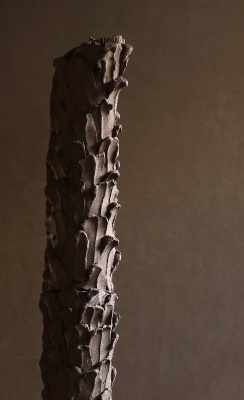Descripción de la Exposición
From September 30, 2011 to January 8, 2012 the Württembergischer Kunstverein is showing the first comprehensive solo exhibition in Europe of Peruvian artist Teresa Burga (born 1935) curated by Dorota Biczel, Miguel A. López, and Emilio Tarazona. The exhibition is based on the artist’s retrospective shown with great success in 2010 at the Instituto Cultural Peruano Norteamericano in Lima. Teresa Burga will also be represented at the 2011 Istanbul Biennial.
This exhibition is positioned within the context of an extensive reassessment of critical conceptual artistic practices from the nineteen-sixties to eighties in Latin America (among other regions) as already explored by the Kunstverein in its 2009 exhibition Subversive Practices.
While Teresa Burga was represented in Subversive Practices (Peruvian section; curators: López and Tarazona) by only one installation, the current exhibition sets out to provide insight into the broad spectrum of her creative work, which encompasses drawings, objects, installations, and audio-visual works.
The Artist
After completing her art studies at the Catholic University of Peru in Lima (1962–1964), Burga turned to experimental forms of art. She joined the group Arte Nuevo (New Art) during 1966–1967, who paved the way for a radical redefinition of the artistic landscape in Peru. While at the School of the Art Institute of Chicago on a Fulbright Scholarship (1968– 1970), she concerned herself with ephemeral conceptual approaches and, after returning home, became one of the early representatives of installation art in Peru. In the nineteen- seventies, complex analytical works followed, which explored the nature and modus operandi of language and various forms of information.
Teresa Burga’s experiments in the areas of pop art, visual poetry, conceptual art, information art, and audio-visual art revolve around questions of representation and mass culture. They explore the constructions of femininity as well as the processes of mechanization and bureaucratization of labor and everyday life. They comprise conceptions of absurd, dysfunctional apparatuses and toys, extensive instructions and diagrams for unrealized projects, musical scores, experiments like the timed or blindfolded production of drawings, and the multimedia visualizations of interdisciplinary research projects.
The Exhibition
Three installations that count among the artist’s key works constitute the focus of the exhibition, in addition to numerous graphic works and objects.
The installation Autorretrato. Estructura. Informe. 9.6.72 (Self-Portrait. Structure. Report. 9.6.1972), originally created in 1972, revolves around the measurability of the human being. Based upon medical examinations carried out on Burga’s own body (her face, blood, and heart) over the course of one day, the work presents photographs, diagrams, and various medical records (blood analysis, electro- and phono-cardiograms) that visualize the results. The sound of the artist’s heart accompanies them, its rhythm regulating the pulsation of a light sculpture.
Quatro Mensajes (Four Messages) from 1974 is in turn founded on “four messages” that the artist randomly extracted from Peruvian television. Burga disassembled their linguistic, auditory, and visual elements and subjected them to a radical realignment. Here the third message—a sentence from a discourse on environmental protection—is deconstructed on various levels at once: for instance, by replacing each individual word within the sentence with its respective lexical definition, or by turning individual letters into material for visual poetry.
2
The installation Perfil de la Mujer Peruana (Profile of the Peruvian Woman, 1980–1981) was created as part of a comprehensive artistic and sociological research project which dealt with the self-perception of young Peruvian women and with their views on topics such as politics, economics, religion, law, and sexuality.
This solo exhibition by Teresa Burga shows a radical and complex artistic position developed between the nineteen-sixties and eighties, one that long failed to be recognized either in Peru or in an international context. This new reassessment of Burga’s work is realized in the context of activities pursued by a broad network of Latin American art theorists and artists, who are presently embarking upon a rereading of the conceptualisms of the South (Southern Conceptualisms Network).
The exhibition is accompanied by a Spanish/English catalogue and a conference, which will take place during the exhibition’s opening weekend.

Exposición. 17 abr de 2025 - 03 sep de 2025 / Centro Cultural Andratx (CCA) / Andratx, Baleares, España

Formación. 08 may de 2025 - 17 may de 2025 / Museo Nacional Centro de Arte Reina Sofía (MNCARS) / Madrid, España